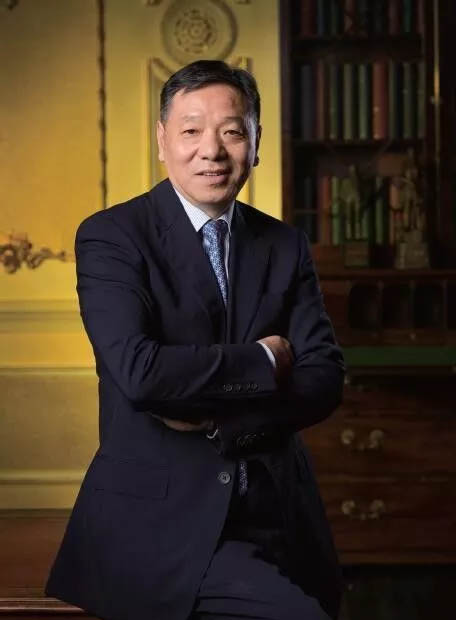Mr. Qin Yun|Stride from “Large Design Nation” into “Strong Design Nation”: Journey of China’s Design under the Initiatives of Belt and Road
The initiative of jointly building Belt and Road was raised in the autumn of 2013. It aims to integrate the policies and development strategies of each nation, achieve complementary advantages and promote common development by enhancing international cooperation.
Mr. Qin Yun
Secretary of Party Committee, Chairman of Arcplus Group PLC
Historical development opportunities under the Initiatives of Belt and Road
H+A: How do you understand the development initiatives of Belt and Road?
Qin: The initiative of jointly building Belt and Road was raised in the autumn of 2013. It aims to integrate the policies and development strategies of each nation, achieve complementary advantages and promote common development by enhancing international cooperation. In 2015, the State Council of the People’s Republic of China published the Vision and Actions on Jointly Building Silk Road Economic Belt and 21st-Century Maritime Silk Road to further interpret the intention, direction and mission of Belt and Road. In 2017, the Belt and Road Forum for International Cooperation was successfully held in Beijing. It is China’s highest level and largest diplomatic agenda initiated and hold by China since the establishment of People’s Republic of China. In this forum, many cooperative agreements were signed. The result list included Policy Coordination, Facilities Connectivity and etc., in 5 categories with 76 main items, 270 items of detailed achievements. It fully reveals that Belt and Road has turned into international consensus from China’s initiatives. In the past four years, relevant cooperation under Belt and Road moved forward steadily. Belt and Road is welcomed by many countries around the world and they participated into it actively. The initiatives bring a lot of opportunities for Chinese enterprises to go global and take part in building Belt and Road.
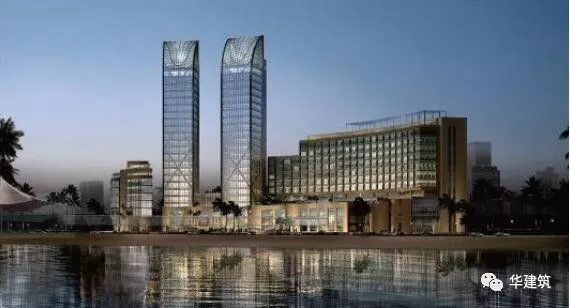
Integrated Project of Olympic Council of Asia in Kuwait
H+A: For the industry you are in, what stage has Belt and Road progressed into?
Qin: Directly viewing from the industry I am in, I can feel the rapid development process vividly in the past 4 years since 2013 for Belt and Road initiatives, growing out from nothing, and starting from one point to the whole areas. The speed and results go beyond expectation, and the development tendency is still accelerating.
According to the statistics from Commerce Department, from January to May of 2017, the turnover of overseas engineering projects is more than CNY 347.01 billion yuan. The new contract volume is CNY 519.14 billion yuan, among which the 61 nations along the Belt and Road signed over 2128 copies of overseas engineering projects with the contract volume of CNY 38.47 billion yuan, which occupies 51% of the total contract value of China’s overseas engineering projects. It achieved a turnover of 24 USD billion, which occupies 47.6% of the total amount in the same stage. We can see from these figures that projects in the countries along Belt and Road occupy nearly half of China’s overseas projects, while the scale is keeping increasing.
H+A: Under the development stage now, for engineering construction industry, what are the opportunities and challenges?
Qin: Actually, the opportunities and challenges coexist, but there are more opportunities. The implementation of China’s Belt and Road initiatives and the increase of overseas investment provide historical opportunities and support in policy for Chinese enterprises going global. Meanwhile, faced with the increasingly intense competitive environment of domestic building market, the capable local building enterprises are fully motivated to going global to expand overseas projects. According to relating statistics, in the coming 10 years, the investment amount for Asia infrastructure construction is about USD 800 billion. The domestic areas covered in Belt and Road include 18 provinces, such as Shanxi, Xinjiang, Qinghai and etc. It is estimated that in the following years, the estimated investment for construction of urbanization, countryside, railway, airport and etc. will reach 1500 billion to 2000 billion. The domestic investment amount for infrastructure keeps increasing. There is an active demand for complementary advantages of domestic and foreign countries. The marketing space for building industry is broad, which provides a vast market for local building enterprises.
But “going global” is not very smooth. It faces big challenges. As a whole, the risks need to be assessed, especially when looking for opportunities in countries and industries which have bad investment environment and high risks. The various policies, laws, regional standards and other elements must be taken into consideration comprehensively. Avoid the risks caused by blind investment. At the same time, the building enterprises should keep improving their own abilities, especially for the building enterprises who “go global” a little bit late. If you are not familiar with the complex overseas markets, there will be a lot of problems when integrating with languages and cultures, business rules, legal systems and industry standards. Therefore, “going global” is also a severe test for the enterprises’ comprehensive ability.
Arcplus in Belt and Road
H+A: As a leading enterprise in architecture design industry, Arcplus Group has accomplished a lot overseas projects in its developing process. Can you briefly introduce us the developing stages and the projects Arcplus ever done?
Qin: The internationalizing of Arcplus Group started in 60s~70s of twentieth century. At that time, the projects were mainly foreign aid ones. The largest civil architecture, International Conference Center in Cairo Egypt, was accomplished in this stage. After the implementation of Reform and Opening-up, Arcplus Group began to expand overseas markets actively. We borrowed a boat to sail. Changed from foreign aid projects in the early times to involving into the competition of overseas projects actively, and gradually transferred from merely “undertake projects” to “explore markets” and “build an enterprise”, Arcplus Group plays its own advantages positively in the field of engineering design. During this period of time, the designed foreign projects included HAVELOCK CITY project in Sri Lanka, National Stadium of Hanoi, Vietnam, PUNE HINJEWADI complex project in India, Integrated Project of Olympic Council of Asia in Kuwait, National Stadium in Ukraine, Atlantis Hotel in the Palm Island of Dubai, International Conference Center in Cairo Egypt, St. Regis Hotel in Singapore and Park Hyatt Hotel in Abu Dhabi and other projects, which were highly recognized by the local markets.
After 2010, as the external economic environment grew mature, the overseas strategy of Arcplus Group accelerated quickly, the international market and domestic market cooperated and compensated with each other. It changed not only from “undertake projects” to “explore markets”, but also transferred from “provide services and products” to “invest and merge overseas”. In 2014, Wilson Associates, the Tops 3 design companies in America, was wholly owned by Arcplus Group. Currently, Arcplus Group has a wholly-owned subsidiary in Hong Kong. Wilson Associates has offices in 8 cities around the world, such as in Dallas, New York and Los Angeles and etc. The business of Arcplus Group will expand to the surrounding countries and regions by overseas operation platform.
A good chess player is an expert in observing the changing situation. Standing at the peak of times, Arcplus Group keeps promoting the internationalization strategy by focusing on Belt and Road initiatives.
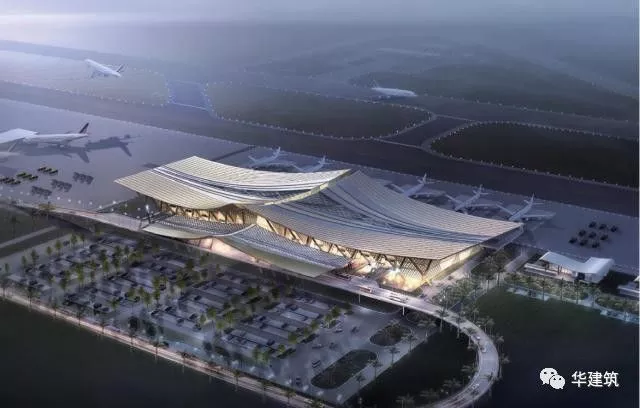
Ghana Airport Terminal Building 3
H+A: Are there any latest progress for Arcplus Group?
Qin: In the past few years, Arcplus Group built up internal strength hardly. The industrial chain was extended to the front and back sides of design increasingly, which makes Arcplus Group an architecture design enterprise equipped with “whole process” consulting services. With years of experience and practices in this industry, Arcplus Group has gained lots of core technology in all areas of design industry, and has various project experiences. A professional team with many domestic famous technology experts and leading management talents are created. As a leader in domestic architectural design industry, Arcplus Group launched into the capital market successfully in 2015, which created the wings for reform and innovation. It provided a better chance to get involved into the international project operations by re-finance and industrial merger. It becomes a new development model to take part in international projects by finances for enterprises. In this period of time, the projects accomplished by Arcplus improved further in brand influence, design level, technological difficulties and the depth of participation. For example, we are now developing the office tower #289 project and the Golden River Complex in Ho Chin Minh City, Vietnam, the Medicare Hospital in Kuwait, Palace Downtown Hotel in Dubai, United Arab Emirates and etc., all these projects have great influence in the local. It can be foreseen that with the moving forward of Belt and Road strategy of China, the influence of Arcplus Group will spread further and wider.
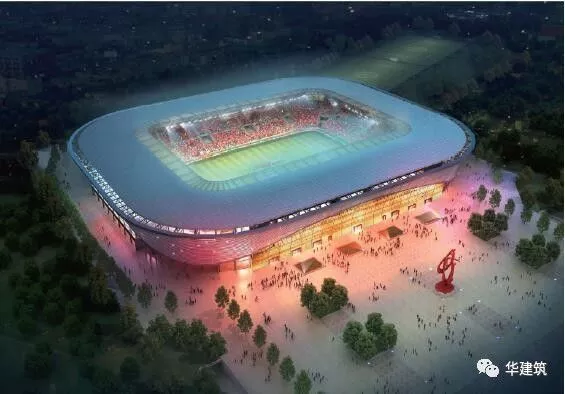
Hapoel Tel Aviv Stadium in Israel
H+A: In your opinion, what is the development opportunity and strategic meaning of Belt and Road initiatives to Arcplus’s expanding of overseas markets?
Qin: Under the implementation of Belt and Road, it provides rare and historical opportunity for the overseas development of domestic engineering design enterprises. In my opinion, the opportunities are mainly as follows. Firstly, the market is much broader. The domestic enterprises should take the chance to keep the balance between the development of domestic and overseas markets. Apply the experience gained by China’s quick development to the urbanization development of nations and regions along the Belt and Road. Take active part in infrastructure construction and people’s livelihood construction. Improve the quality of local city environment construction and benefit the local people. Secondly, the capability is strengthened further. “Going global” raises the higher requirement for an enterprise to improve its own capability. It requires us to get accustomed to the design standards in overseas markets, avoid and control the risks, enhance the ability to invest and finance, as well as to train and store international engineering talents and etc. Thirdly, for state-owned enterprises, the mission is more arduous. The nature of state-owned enterprise itself includes the native social responsibilities. In the process of “going global”, it undertakes the historical development mission for the rise of China’s design, and shall make contributions for China’s design to stand rick-firm in the global family of nations.
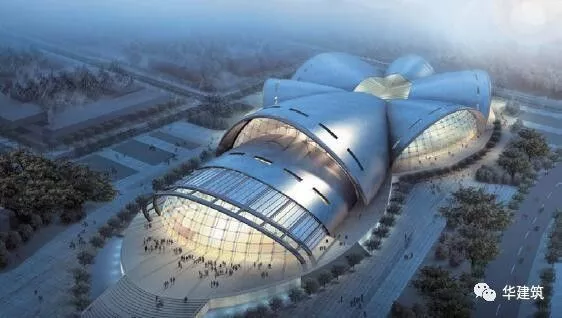
National Academy for the Performing Arts in Trinidad and Tobago
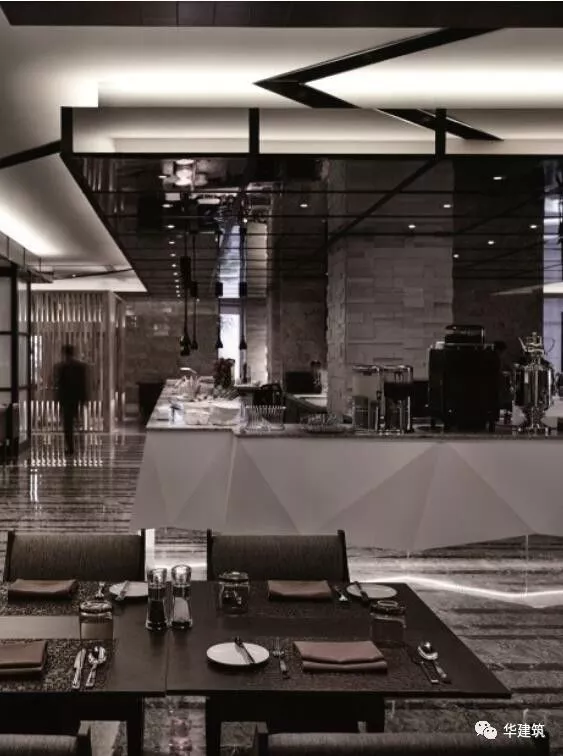
Amani Hotel in Dubai, United Arab Emirates
The Future of China’s Design
From Large Design Nation to Strong Design Nation
H+A: After experiencing over 30 years’ high speed urbanization, what is the position of China’s design in the world?
Qin: Since the reform and opening-up in 1980s, our urbanization underwent from a low point to high-speed development process with the quick development of economy and industrialization. The large quantities of construction sprang up in a short time promotes the development of China’s construction industry. It also brings international attention for the scale of economy. American Engineering News-Record (“ENR” for short) magazine published the top 250 international contractors in 2015. 65 Chinese inland enterprises were included in the list. The overseas turnover of those Chinese enterprises occupied 17.2% of the total amount. 3 more Chinese enterprises were added in the list compared with the number in the previous year. In the same year, 22 Chinese inland enterprises went into ENR’s list for Top 225 international engineering design enterprises. Also 3 more Chinese enterprises were added compared with that in last year. The international turnover of those listed Chinese inland enterprises as a whole achieved USD 2.8933 billion in 2014, with the year-on-year growth rate of 14.6%. It is obviously higher than the average level of ENR’s 225 international engineering design enterprises. When we are satisfied with the raised economic level of Chinese design, we also realize clearly that there are still gaps with the international top design standard. We need to think about changing from care of quantity to quality and stride from “large design nation” into “strong design nation”.
H+A: Do the initiatives of Belt and Road help China’s design to appear in international stage? Do the initiatives provide new opportunities for China’s design?
Qin: Yes, indeed. We can find that China’s design meets the best development chance. For Chinese designers, from one aspect, they are receiving the most popular and prompt information around the world. They can adopt the most advancing design language to express their own design attitude. In addition, China has a long history and culture with inexhaustible design elements available for use. The implementation of Belt and Road enhances the communication and cooperation in economy, society, culture and other areas among the nations along the Belt and Road. Chinese designers can definitely take advantages of this historical chance to make good use of our design talents to realize the purpose of raising the level of China’s design under the platform of Belt and Road strategy.
H+A: What problems should China’s design overcome in going global?
Qin: It should be recognized that it is not very long since the western modern architecture design system launched into China. But it developed with fast speed in China’s urbanization process. A number of excellent local designers, architecture design enterprises and construction engineering with international standards turned up. The architecture industry becomes one of the most critical components of China’s economy. Nowadays, this industry is experiencing a profound revolution, and there are development issues that need to be resolved urgently.
To help China’s design going global, we must concentrate on improving the status of architect to ensure that the architect plays a leading role in the whole construction process of the project. They should have the sense of responsibility and honor and culture confidence, advocating responsibility, innovation, and creation. Secondly, top level of design for architecture management should be equipped with Architect Responsibility System. The architect should be responsible for the whole construction process of a project and renovate the phenomenon of missing responsibility. Thirdly, the architects should improve the ability and strengthen the sense of responsibility and delicacy. Engage in architecture creation with craftsman spirit for purchasing excellence and create more outstanding art of works. Last but not least, we must realize that the current world is a blended and open one. As to the design output of China, we should strengthen the establishment of our own features on the basis of enhancing the design ability and give prominence to original design. The unchanging of the 21 st century is “changing”.

